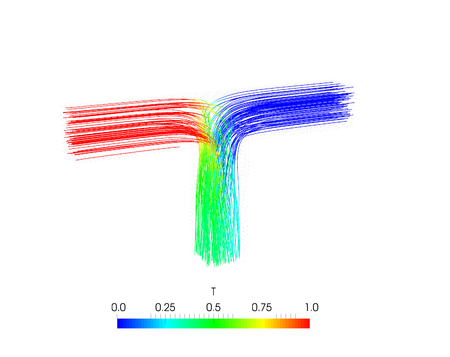Difference between revisions of "T-junction by Bahram Haddadi and colleagues"
Jump to navigation
Jump to search
Jozsef Nagy (talk | contribs) |
Jozsef Nagy (talk | contribs) |
||
| Line 1: | Line 1: | ||
[[category:basic tutorial]] | [[category:basic tutorial]] | ||
[[category:laminar]] | [[category:laminar]] | ||
| − | * '''contributor''': Bahram Haddadi, Clemens Gößnitzer | + | * '''contributor''': Bahram Haddadi, Clemens Gößnitzer, Sylvia Zibuschka, Yitong Chen |
* '''affiliation''': Forschungsgruppe Thermische Verfahrenstechnik & Fluiddynamische Simulation am Institut für Verfahrenstechnik der Technischen Universität Wien, Austria | * '''affiliation''': Forschungsgruppe Thermische Verfahrenstechnik & Fluiddynamische Simulation am Institut für Verfahrenstechnik der Technischen Universität Wien, Austria | ||
* '''contact''': <mail address='bahram.haddadi.sisakht@tuwien.ac.at' description='author'>click here for email address</mail> | * '''contact''': <mail address='bahram.haddadi.sisakht@tuwien.ac.at' description='author'>click here for email address</mail> | ||
Revision as of 11:43, 14 March 2018
- contributor: Bahram Haddadi, Clemens Gößnitzer, Sylvia Zibuschka, Yitong Chen
- affiliation: Forschungsgruppe Thermische Verfahrenstechnik & Fluiddynamische Simulation am Institut für Verfahrenstechnik der Technischen Universität Wien, Austria
- contact: click here for email address
- OpenFOAM version: OpenFOAM 5.0 and v1712
- Published under: CC BY-NC-SA license (creative commons licenses)
- Editorial board: Bahram Haddadi, Christian Jordan, Michael Harasek
Residence time distribution
Explanation: Use the simpleFoam and scalarTransportFoam to simulate the flow through a square cross section T pipe and calculate RTD (Residence Time Distribution) for both inlets using a step function injection.
Objectives:
- Understanding RTD calculation using OpenFOAM
- Using multiple solver for a simulation
Picture: Bahram Haddadi, TU Wien
